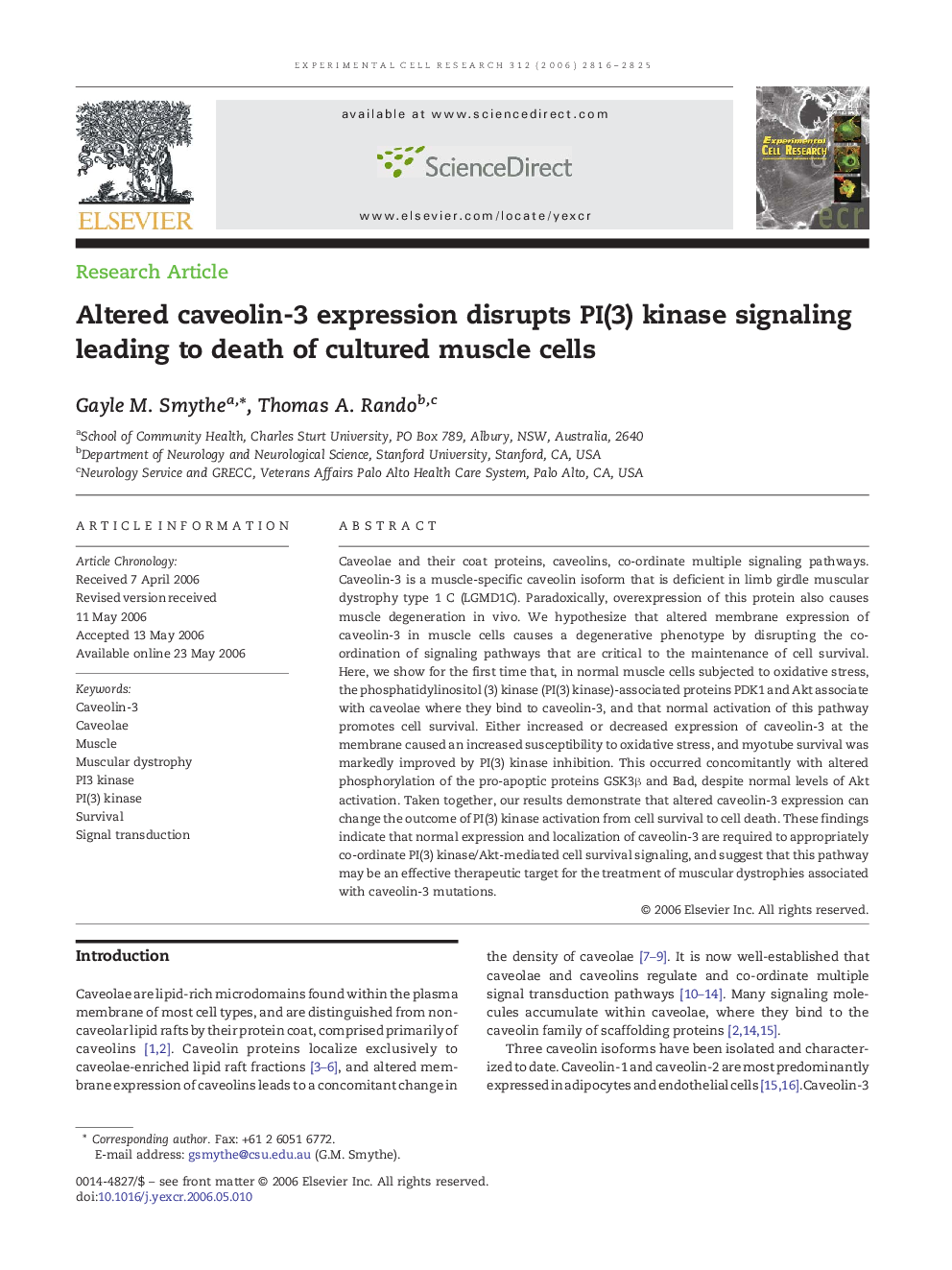| Article ID | Journal | Published Year | Pages | File Type |
|---|---|---|---|---|
| 2132878 | Experimental Cell Research | 2006 | 10 Pages |
Caveolae and their coat proteins, caveolins, co-ordinate multiple signaling pathways. Caveolin-3 is a muscle-specific caveolin isoform that is deficient in limb girdle muscular dystrophy type 1 C (LGMD1C). Paradoxically, overexpression of this protein also causes muscle degeneration in vivo. We hypothesize that altered membrane expression of caveolin-3 in muscle cells causes a degenerative phenotype by disrupting the co-ordination of signaling pathways that are critical to the maintenance of cell survival. Here, we show for the first time that, in normal muscle cells subjected to oxidative stress, the phosphatidylinositol (3) kinase (PI(3) kinase)-associated proteins PDK1 and Akt associate with caveolae where they bind to caveolin-3, and that normal activation of this pathway promotes cell survival. Either increased or decreased expression of caveolin-3 at the membrane caused an increased susceptibility to oxidative stress, and myotube survival was markedly improved by PI(3) kinase inhibition. This occurred concomitantly with altered phosphorylation of the pro-apoptotic proteins GSK3β and Bad, despite normal levels of Akt activation. Taken together, our results demonstrate that altered caveolin-3 expression can change the outcome of PI(3) kinase activation from cell survival to cell death. These findings indicate that normal expression and localization of caveolin-3 are required to appropriately co-ordinate PI(3) kinase/Akt-mediated cell survival signaling, and suggest that this pathway may be an effective therapeutic target for the treatment of muscular dystrophies associated with caveolin-3 mutations.
